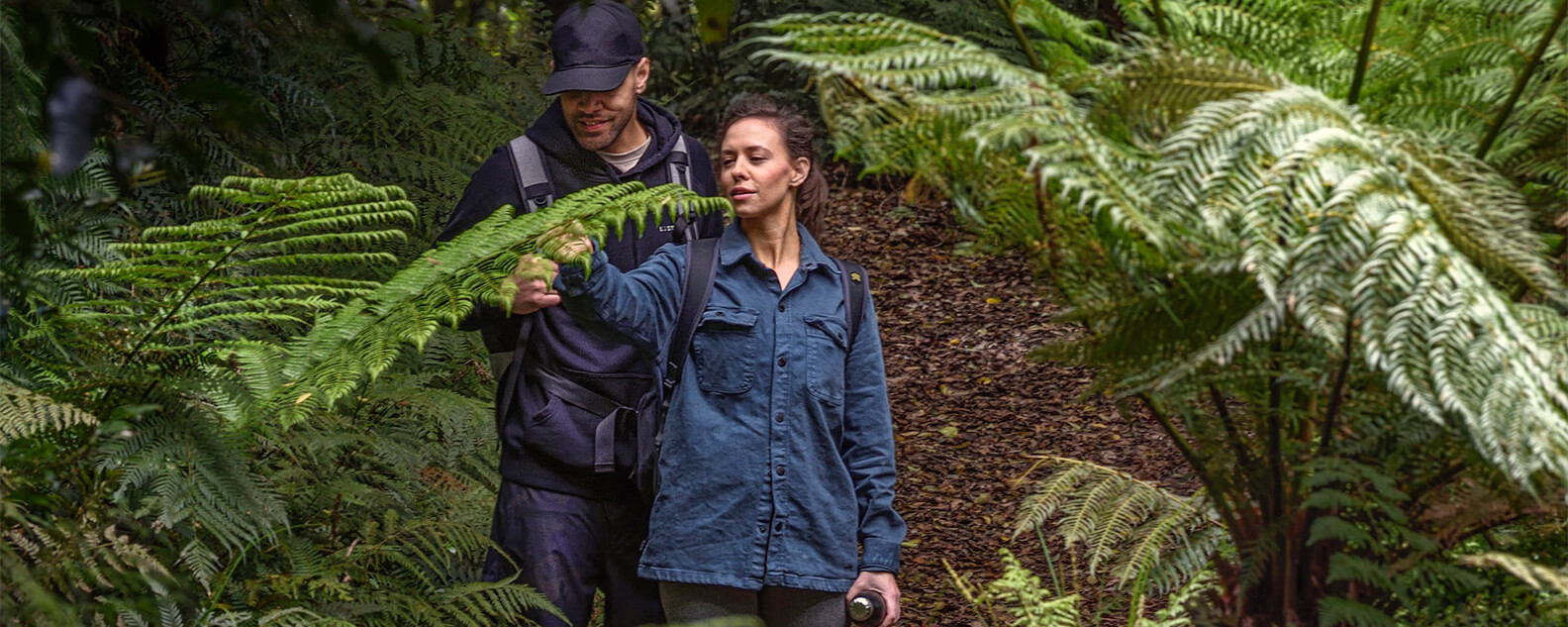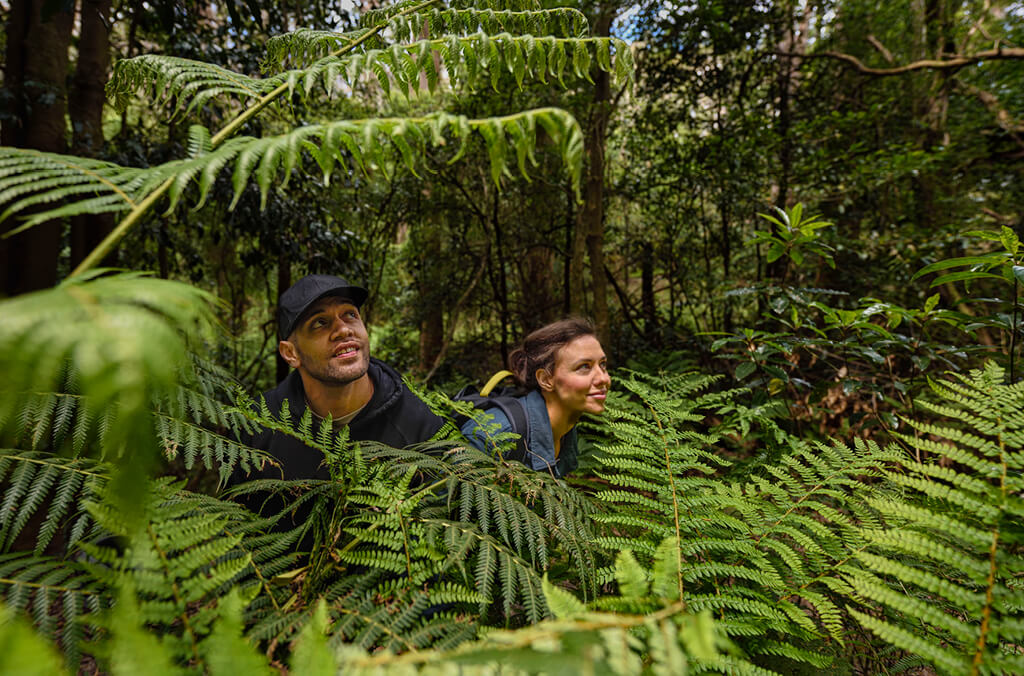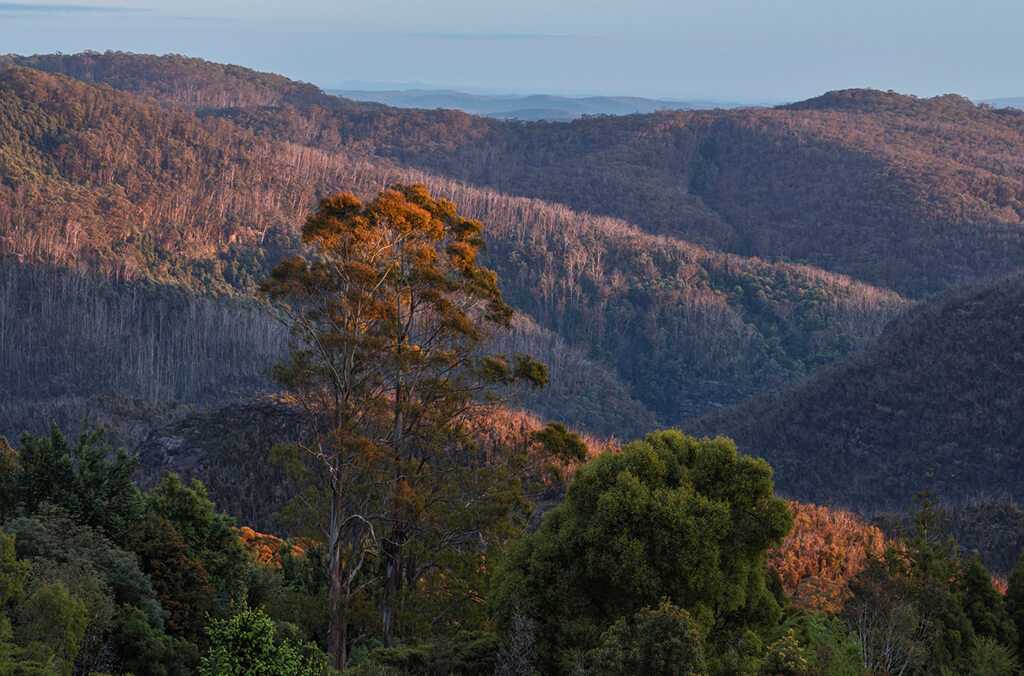Natural Areas
Explore Blue Mountains Basalt Cap Forest with stands of sassafras, coachwood and ethereal ferns.

The Jungle and Lady (Nancy) Fairfax Walk
In the 1920s, a group of businessmen, with the support of the late Sir James Fairfax, purchased 283 hectares of threatened Blue Mountains temperate rainforest in Mount Tomah, protecting it from timber millers by converting it into a “conservation park”. Known as The Jungle, it was a major tourist attraction of its time, and included tearooms and walking tracks to beautiful features such as the Temple of Nature, a mystical glow worm-filled grotto lined with tree ferns.
While it was hoped The Jungle would become the area’s first National Park, that dream was dashed by the onset of the Great Depression; and in 1934, the land was transferred back to the Charley family, the previous owners of the site.
In 2008, however, the Royal Botanic Gardens and Domain Trust, with the assistance of John and Elizabeth Fairfax, purchased 33 hectares of the original Jungle, making it officially part of the Blue Mountains Botanic Garden and once again opening it to an admiring public.
Located west of the cultivated garden and bordering Bells Line of Road, the Jungle is now accessed via the Lady (Nancy) Fairfax Walk, a peaceful trail named after Lady (Nancy) Fairfax OBE in recognition of her philanthropical support for a range of community organisations.
Setting off from near the entrance of the Blue Mountains Botanic Garden, the pathway winds for around 500 metres through Blue Mountains Basalt Cap Forest, past magnificent stands of sassafras, coachwood and brown barrel entwined with strangler vines and through glades of ethereal tree ferns.
To fully immerse yourself into the forest and open the senses to the healing qualities of nature, join one of our guided Nature Therapy Walks to learn the Japanese art of shinrin-yuko, or forest bathing.

Setting off from near the entrance of the Garden, the pathway winds for around 500 metres through Blue Mountains Basalt Cap Forest.

The conservation area includes sandstone woodland and tiny hanging swamps, with significant species of heath, sclerophyll and Blue Mountains rainforest plants.
The Spur Conservation Area
While this area is not open to the public, it is an important conservation area where horticulturalists and scientists can research important ecosystems. There are five main vegetation communities home to many rare plants and animals.
This includes 186 hectares of sandstone woodland and gullies, very tiny hanging swamps, with significant species of heath, sclerophyll and Blue Mountains rainforest plants.